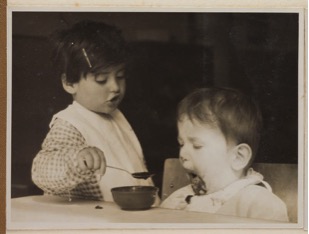
When James Brown returned to George Orwell’s dystopia in an age of pervasive social media intrusion and a global pandemic, it felt a very different novel to the one he had read as a teenager.

When James Brown returned to George Orwell’s dystopia in an age of pervasive social media intrusion and a global pandemic, it felt a very different novel to the one he had read as a teenager.
Historian Andreas Killen on the history of the brain at the start of the Cold War.
Marcia Holmes and Daniel Pick’s new article ‘Voices Off: Stanley Milgram’s cyranoids in historical context’ is available to read and download.
Podcasts on the historical and contemporary relationships between child psychoanalysis, observation and visual culture from the Hidden Persuaders Symposium, 6th April 2019, Freud Museum London.
Jennifer Crane explores how gifted children were imagined as potential peacetime leaders, or as dangerous future citizens who might use their unique talents to subvert authority.
How did child psychologists contribute to the Cold War discourse of “National Security”? Carolyn Laubender discusses the relationship between John Bowlby’s attachment theory and larger political anxieties about the protections offered by the nation state.
This conference aims to contribute to the debate on the universality and cross-cultural applications of the notions of mental health and illness by exploring the historical origins and development of the notion of ‘global psyche’ and transcultural psychiatry.
As Emma Smith’s Wunderblock opens at the Freud Museum London, we publish here one of the texts by the Hidden Persuaders team that informed the development of the exhibition.

An exhibition of new work at the Freud Museum London, 6 March- 26 May 2019, by artist Emma Smith, drawing on original research by the Hidden Persuaders Project.
We interview Audra Wolf about her new book, Freedom’s Laboratory: The Cold War Struggle for the Soul of Science.